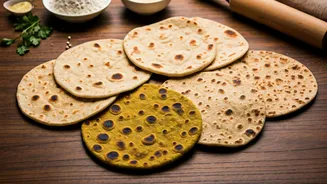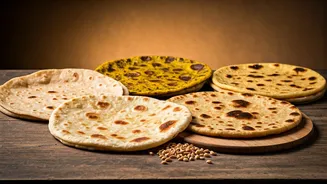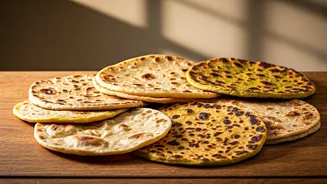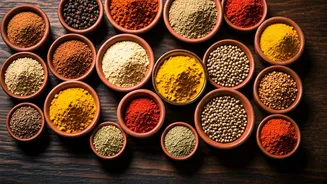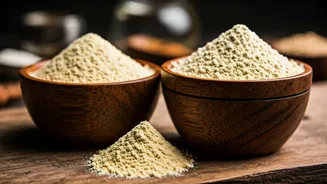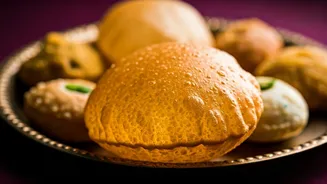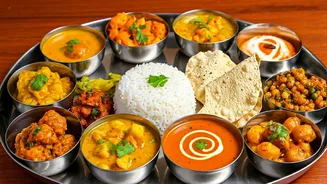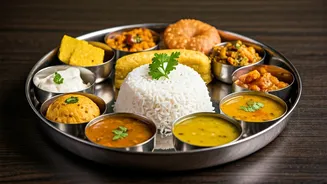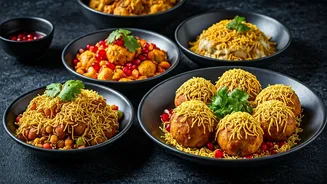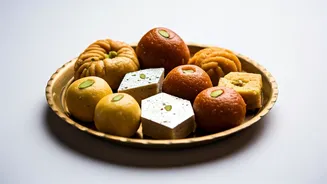Introduction: Roti Varieties
Rotis, an integral part of Indian cuisine, present a diverse range of options, each possessing distinct characteristics. Their versatility stems from variations
in ingredients, preparation methods, and even regional preferences. The composition of each roti greatly influences its texture, taste, and ultimately, its digestibility. Moreover, the choice of the appropriate roti variant can contribute to a balanced and satisfying meal, while also being mindful of the weather to maximize enjoyment. Understanding these facets provides a deeper appreciation for the culinary art of roti-making and the role these flatbreads play in daily diets.
Phulka: The Light Delight
Phulka, recognized as one of the lightest rotis, is cooked over an open flame, causing it to puff up beautifully. It is primarily made from whole wheat flour, ensuring ease of digestion. Because of its light nature, phulka typically digests within approximately 1.5 to 2 hours, making it a good choice for those seeking a quick and easy-to-digest meal. Its lightness makes it particularly suited for the warmer months. As summer arrives, phulka provides a gentle option that doesn't weigh the body down. The light texture means one can eat more of this roti without feeling overly full, fitting perfectly into the need for lighter meals during hotter periods.
Chapati: Everyday Staple
Chapati, a common staple, shares similarities with phulka, but is cooked on a griddle or tawa before being finished over an open flame. Prepared from whole wheat flour, it provides a moderate level of fiber. The digestion time for chapati usually falls within 2 to 2.5 hours, making it a reliable and moderately filling choice. Since chapati is relatively easy to prepare and digest, it is suitable for consumption throughout the year. However, its balanced properties suit a variety of weather conditions. Enjoying it with curries and vegetables is a great addition to the daily diet, providing necessary nutrients and a taste loved by many.
Paratha: Flavorful Treat
Parathas stand out as richer options, typically made with whole wheat flour and often incorporating ghee or oil during preparation. This addition contributes to a more layered texture and enhanced flavor. Because of their higher fat content, parathas usually take longer to digest, with a digestion time of about 2.5 to 3.5 hours. It’s best to consume parathas during cooler months. Their richness provides comfort, making them a favored choice when the weather is cold. Consider serving parathas with yoghurt or other cooling side dishes to balance the meal.
Missi Roti: Besan Blend
Missi roti uniquely incorporates besan (gram flour) into the whole wheat flour base. The addition of besan contributes a distinct flavor and increased protein content. The presence of besan in missi roti also influences its digestion time, typically ranging from 2.5 to 3 hours, offering a balance between lightness and substance. Because of its varied nutritional profile, missi roti is enjoyed year-round. It is often served with a variety of vegetable dishes and yogurt, making it a popular dish. The combination of protein and fiber makes it an excellent choice for a filling and nutritious meal.
Bajra Roti: Millet Powerhouse
Bajra roti, made from pearl millet flour, is exceptionally nutritious, loaded with essential nutrients, and known for its earthy flavor. Due to its high fiber content, bajra roti usually has a slightly longer digestion time, falling within the range of 3 to 3.5 hours. The unique properties of bajra roti make it best suited for cooler months, especially in regions that experience colder climates. It is often paired with a variety of vegetables and yogurt. As a result, bajra roti provides a warming and satisfying meal while offering excellent nutritional value.
Makki di Roti: Corn Delight
Makki di Roti, made from corn flour, has a distinct taste. It is commonly enjoyed with sarson ka saag. The digestion time for makki di roti, considering its composition, usually ranges between 3 to 3.5 hours, offering a balance between texture and digestibility. The slightly heavier texture makes it most suitable for enjoying during the cooler parts of the year. Pairing makki di roti with sarson ka saag provides a traditional and heartwarming meal that is cherished throughout various regions. Consider it a great option for a comforting experience, especially during winter months.
